In the figure shown co-efficient of friction between the block B and C is 0.4. There is no friction between the block C and hte surface on which it is placed. The system of blocks is released from rest in the shown situation. Find the distance moved by the block C when block A descends through a distance 2m. Given masses of the blocks are mA=3kg,mB=5kgandmC=10kg.
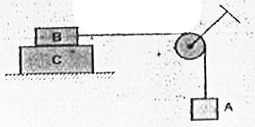

Let there is no relative motion between the blocks B and C
Hence
T=(mB+mC)a ...(1)
And mAg−T=mAa ...(2)
From (1) and (2), we get
a=mAgmA+mB+mC=3018=53m/s2
⇒ Net force on the block C is, F=mca=10×(5/3)N=16.6N
If maximum value of frictional force acting on block C isfmax, then
f(max)=μmBg=0.4×5×10=20N ∵F≤fmax
Hence there is no relative between the block B and C. Therefore distance moved by C is 2m only.
Topper's Solved these Questions
- LAWS OF MOTIONBook:FIITJEEChapter:LAWS OF MOTIONExercise:ASSIGNMENT PROBLEMS (SUBJECTIVE) (Level-I) (Short Answer type question)
Explore 2 Videos
- LAWS OF MOTIONBook:FIITJEEChapter:LAWS OF MOTIONExercise:ASSIGNMENT PROBLEMS (SUBJECTIVE)(Level-I)(Fill in the blanks)
Explore 2 Videos
- LAWS OF MOTIONBook:FIITJEEChapter:LAWS OF MOTIONExercise:MATRIX MATCH TYPE
Explore 4 Videos
- KINEMATICSBook:FIITJEEChapter:KINEMATICSExercise:NUMERICAL BASED QUESTIONS DECIMAL TYPE
Explore 5 Videos
- MAGNETICBook:FIITJEEChapter:MAGNETICExercise:Numerical Based Type
Explore 2 Videos
Similar Questions
A block of mass M is placed on the top of a bigger block of mass 10 M as shown in figure. All the surfaces are frictionless. The system is released from rest, then the distance moved by the bigger block at the instant the smaller block reaches the ground :

View SolutionA block A (mass 4M) is placed on the top of a wedge block B of base length l (mass=20M) as shown in figure. When the system is released from rest. Find the distance moved by the block B till the block A reaches ground Assume all surfaces are frictionless.
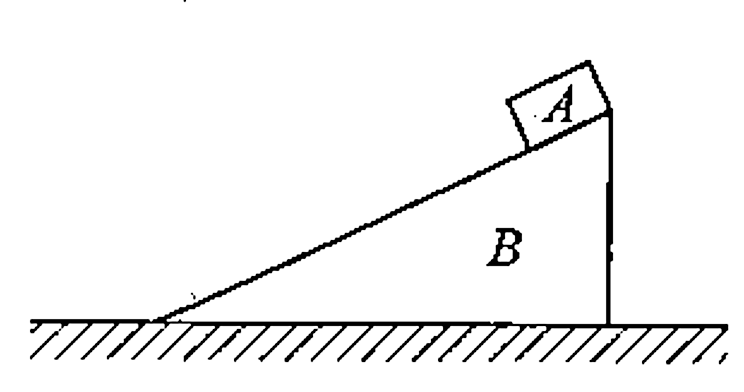
View Solution
Knowledge Check
The coefficient of friction between the block A of mass m & block B of mass 2m is μ. There is no friction between block B & the inclined plane. If the system of blocks A & B is released from rest & there is no slipping between A & B then :
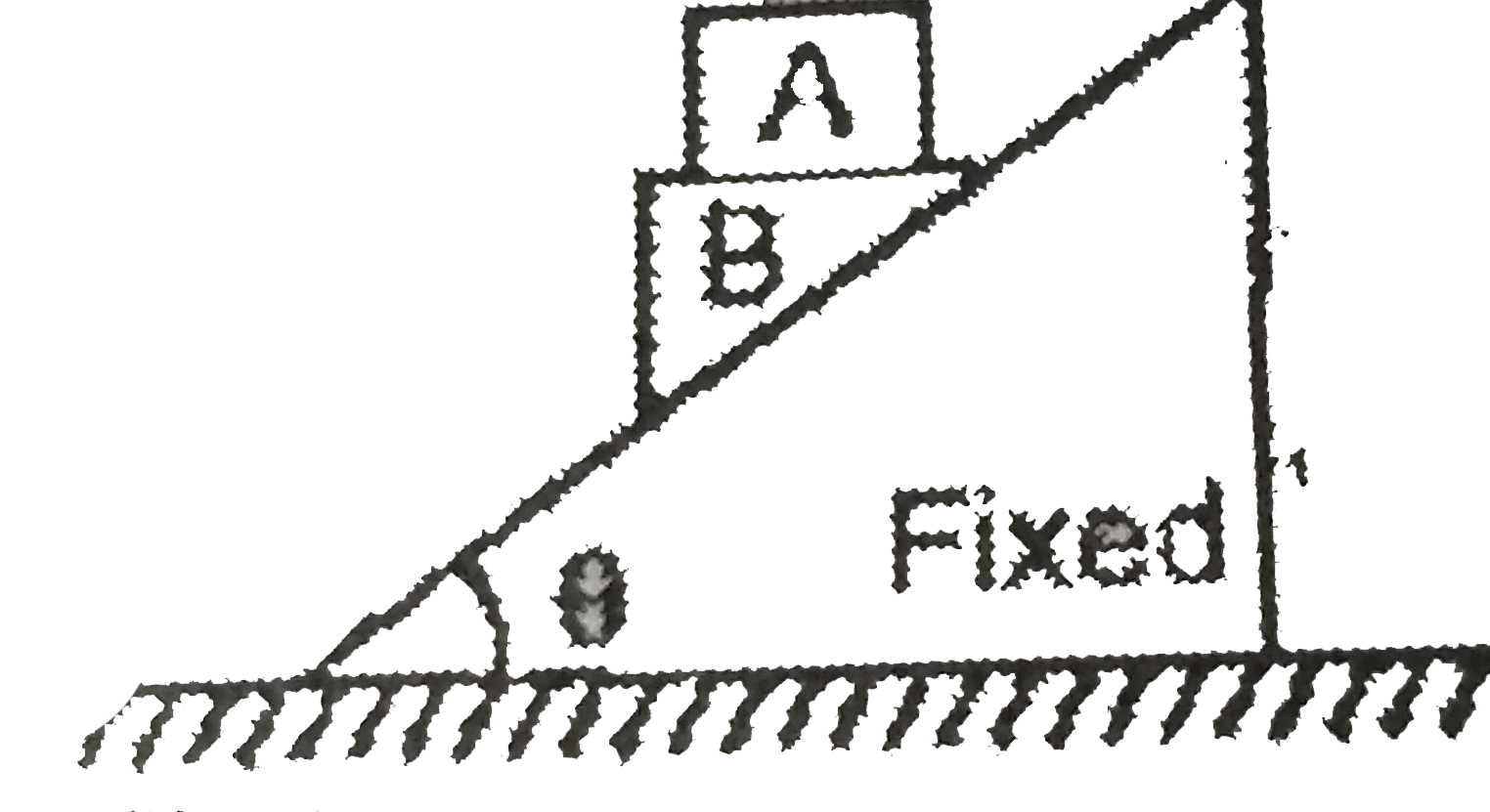 A2θ<sin−1(2μ)Bθ<tan−1(μ)C2θ<cos−1(2μ)D2θ<tan−1(μ/2)
A2θ<sin−1(2μ)Bθ<tan−1(μ)C2θ<cos−1(2μ)D2θ<tan−1(μ/2)Consider the shown arrangement. The coefficient of friction between the two blocks is 0.5 . There is no friction between the 4 kg block and of 12 N is applied on the 2 kg block as shown in the figure, the acceleration of the 4 kg block would be
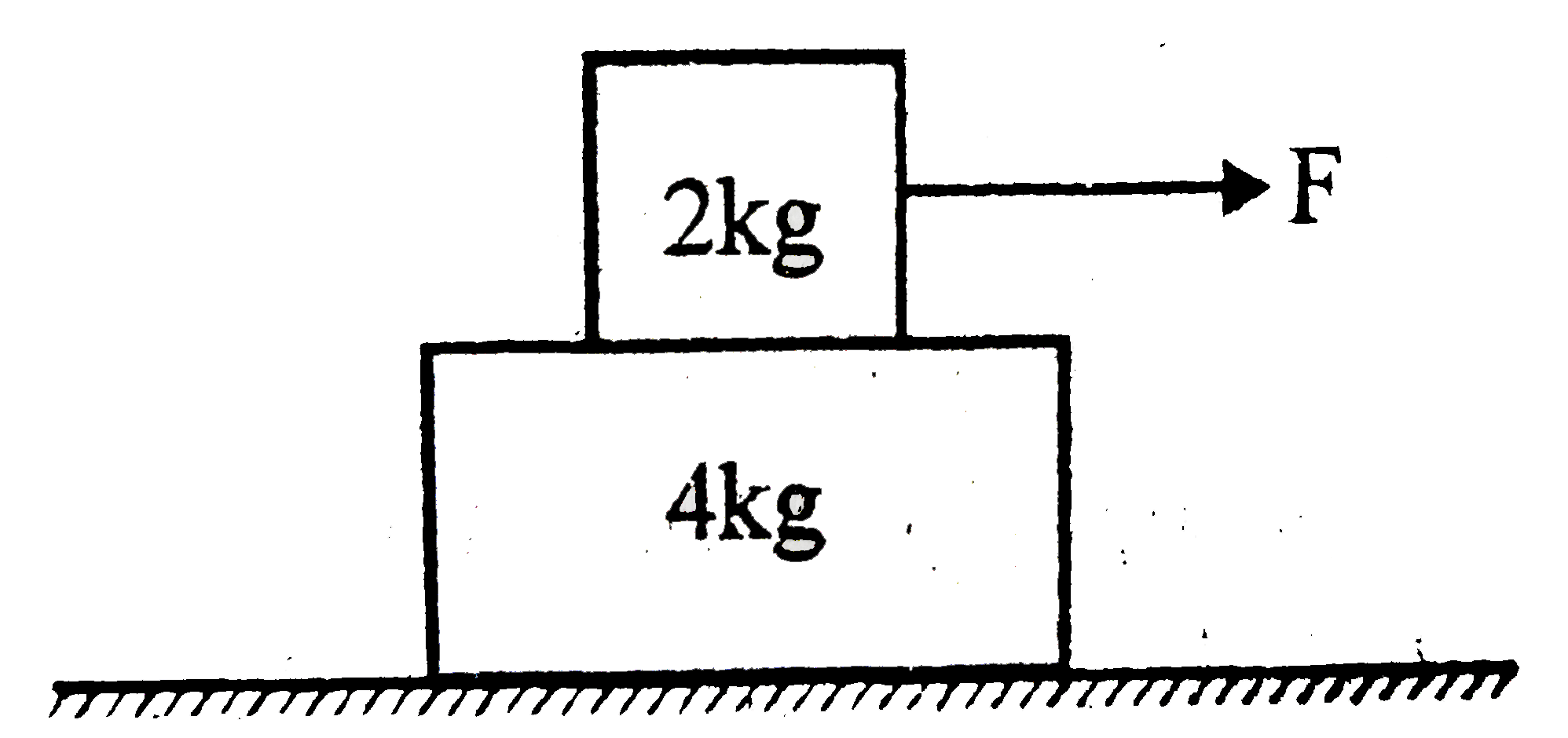 A2.5m/s2B2m/s2C5m/s2DNone
A2.5m/s2B2m/s2C5m/s2DNoneThe coefficient of friction between the block A of mass m & block B of mass 2m is μ. There is no friction between A&B is released from rest & there is no slipping between A&B then:
 A2θ≤sin−1(2μ)Bθ≤tan−1(μ)C2θ≤cos−1(2μ)D2θ≤tan−1(μ/2)
A2θ≤sin−1(2μ)Bθ≤tan−1(μ)C2θ≤cos−1(2μ)D2θ≤tan−1(μ/2)
In the figure shown masses of the blocks A, B and C are 6kg, 2kg and 1kg respectively. Mass of the spring is negligibly small and its stiffness is 1000 N//m. The coefficient of friction between the block A snd the table is μ=0.8. Initially block C is held such that spring is in relaxed position. The block is released from rest. Find (g=10m/s2).
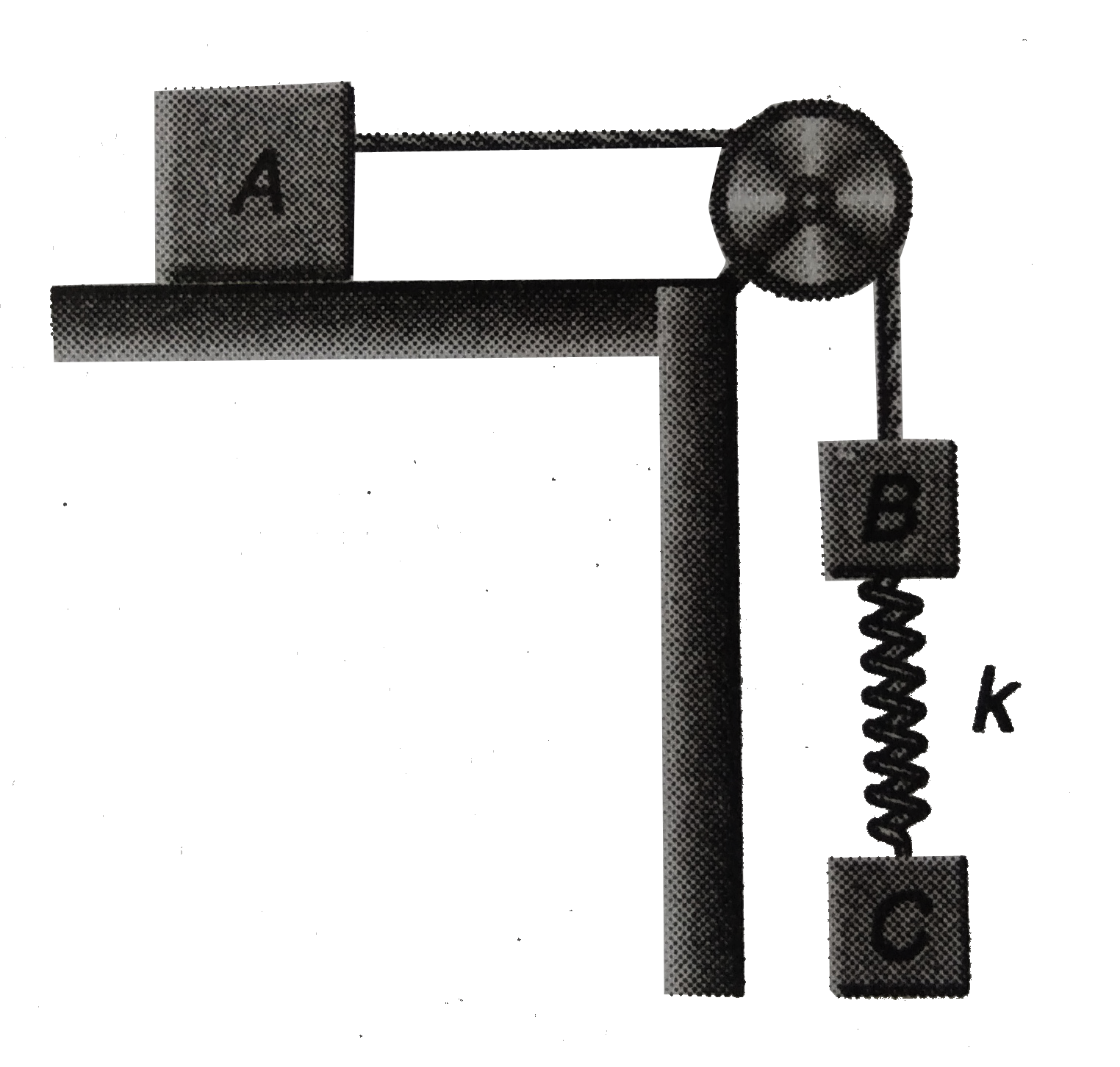
(a) the maximum distance moved by the kinetic C.
the acceleration of each block, when clongation in the spring is maximum.
View SolutionThe block A in the given figure is of mass 10√3 kg The coefficient of friction between the block and the surface on which it rests is 0.5. Find maximum mass of block B possible such that the system will be in equilibrium is.
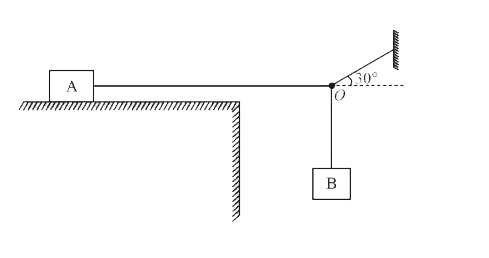
View SolutionThe block A in the given figure is of mass 10√3 kg The coefficient of friction between the block and the surface on which it rests is 0.5. Find maximum mass of block B possible such that the system will be in equilibrium is.

View SolutionA block of mass M is placed on the top of a bigger block of mass 10 M as shown in figure. All the surfaces are frictionless. The system is released from rest, then the distance moved by the bigger block at the instant the smaller block reaches the ground :

View SolutionA system is shown in figure. Blocks 2 & 3 kg are at rest then co-efficient of friction between 2 kg & incline is
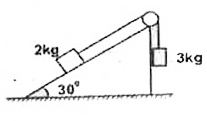
View Solution

